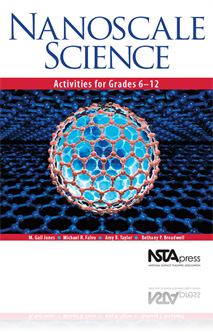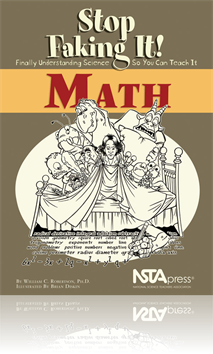All Book Chapters
Book Chapter
Shrinking Cups: Changes in the Behavior of Materials at the Nanoscale
What if you were only one inch tall? This activity explores the behavior of liquids in different sizes and shapes of drinking containers. Students explore how the size of the cup determines if the liquid will pour out of the cup. This activity models...
Book Chapter
Limits to Size: Could King Kong Exist?
Why can’t spiders be ten feet tall? Can an ape grow to the size of King Kong? Surface area-to-volume relationships help shed light on the question of the size limits of organisms. At the nanoscale, things are so small that surface area effects impa...
Book Chapter
The purpose of this assessment probe is to elicit students’ basic ideas about inheritance of genetic traits. The probe is designed to reveal the variety of ideas students have about how traits, such as fur color, are passed on to offspring. ...
Book Chapter
The purpose of this assessment probe is to elicit students’ ideas about the characteristic property of boiling point. The probe is used to find out whether students recognize that the temperature of a boiling liquid stays constant no matter how lon...
Book Chapter
The purpose of this assessment probe is to elicit students’ ideas about intensive and extensive properties of matter. The probe is designed to find out which properties students think will change if the amount of material changes and which will sta...
Book Chapter
The purpose of this assessment probe is to elicit students’ ideas about the transfer of energy. The probe is designed to determine whether students recognize that heat flows from warmer objects or areas to cooler ones. ...
Book Chapter
The purpose of this assessment probe is to elicit students’ ideas about adaptation. The probe is designed to reveal whether students think individuals intentionally change their physical characteristics or behaviors in response to an environmental ...
Book Chapter
The purpose of this assessment probe is to elicit students’ ideas about density. The probe is designed to find out if students think changing the size of an object affects its density....
Book Chapter
The purpose of this probe is to elicit students’ ideas about the day/night cycle. The probe is designed to find out if students recognize that the Earth’s rotation is responsible for the day/night cycle. ...
Book Chapter
The purpose of this assessment probe is to elicit students’ ideas about the relative position of common objects seen in the sky. The probe is designed to find out if students recognize how far away the stars are in relation to the Earth and the Moo...
Book Chapter
This first chapter starts off with addition, subtraction, multiplication, division, fractions, and a few other things. It gives a demonstration of the basic differences between memorizing rules and really understanding the process. For those who te...
Book Chapter
Given that the vast majority of people reading this book will never ever have to teach calculus, you might be wondering why in the world the topic is being addressed here. Well, even though you might not teach calculus, chances are that when teachin...
Book Chapter
This chapter deals with fractions and decimals. This is one place where people who are otherwise fine with math jump off the boat and decide it's just too weird to continue. As with everything else, though, it's only a matter of understanding what'...
Book Chapter
This chapter contains basic material related to exponents that is a supplement to Chapters 1 and 2. Keeping with the theme of the first two chapters, there will be a discussion of procedures for which one may know the rules, but might not understand...
Book Chapter
This chapter is all about negative numbers, and how to deal with them. They're not all that difficult to understand, but for some reason people get just a little uptight when they see computations involving negative numbers. I'm guessing that the a...




